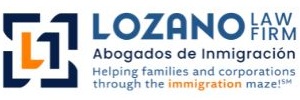Key Points:
The EB-5 visa offers a path to permanent U.S. residency through investment in a new commercial enterprise. The minimum investment is $1,050,000, or $800,000 if the project is located in a Targeted Employment Area (TEA). Investors can work through Regional Centers, which pool funds and handle job creation requirements. Because investments must remain “at risk” and meet strict USCIS guidelines, legal guidance is key to avoiding delays or denials.
Let’s walk through what you need to know about EB-5 Regional Center investment requirements, the role of Targeted Employment Areas, and how legal guidance can make or break your petition.
Is the EB-5 visa too good to be true? Some would think so, since it provides a direct path to permanent U.S. residency through a single investment. Then there are the horror stories: lost capital, denied petitions, broken promises. If you are confused at this point, it’s understandable.
The EB-5 program does offer a legitimate and strategic path to a green card. But like all immigration programs, it comes with precise rules, legal risks, and financial complexities. Understanding these up front is critical to protecting both your immigration goals and your investment.
What The EB-5 Program Requires From Investors
Congress created the EB-5 Immigrant Investor Program in 1990 to spur job growth and economic development through foreign investment. In return, qualified investors and their immediate family members can apply for lawful permanent residency. But this path isn’t automatic. To qualify, you must invest in a new commercial enterprise that creates at least ten full-time jobs for U.S. workers. The business must be for-profit and structured to stimulate the U.S. economy.
Most importantly, the funds you invest must remain “at risk.” That means there are no guarantees, not of a financial return, and not of a green card. The money must be placed in an active business venture, not simply held or promised. This requirement ensures that your capital contributes meaningfully to job creation and growth, not just your personal immigration outcome.
As of the current policy, the standard minimum investment is $1,050,000. However, if the project is located in a Targeted Employment Area (TEA), a rural region, or one with high unemployment, that threshold drops to $800,000. We’ll explore that distinction further in a moment.
Why Many Investors Choose EB-5 Regional Centers
With both the standard and TEA investment amounts, most EB-5 investors choose to work through a USCIS-designated Regional Center. Of course, direct investment is still an option. Approved Regional Centers are authorized to sponsor investment projects, pool funds from multiple investors, and manage the development of large-scale commercial ventures.
The benefit is twofold: first, it’s easier to meet job creation requirements because Regional Centers can count indirect and induced jobs in addition to direct employment. To put it simply, the impact of your investment, suppliers, contractors, and related industries counts toward your ten-job minimum. Second, Regional Centers allow investors to take a more passive role. You’re not required to run a business or supervise employees. This is ideal for those who prefer to focus on their families or other ventures while pursuing immigration benefits.
That said, not all Regional Centers operate with the same level of diligence or transparency. Some have lengthy track records and strict compliance controls. Others have failed to deliver job creation or meet USCIS standards, leaving investors with denied applications or financial losses. This is where professional due diligence and trusted legal guidance become essential.
TEA vs. Non-TEA Investment Amount
The amount you must invest depends on where the project is located. As mentioned earlier, the standard minimum investment is $1,050,000. However, if the business is in a designated Targeted Employment Area, or TEA, the threshold is reduced to $800,000.
A TEA can qualify in one of two ways:
- Rural designation – Areas outside metropolitan statistical zones, with populations under 20,000.
- High-unemployment designation – Regions where unemployment rates are at least 150% of the national average.
The lower threshold is designed to channel foreign investment into communities that need economic growth the most.
It’s important to understand that TEA designations are not permanent. USCIS reviews eligibility regularly, and a project that qualifies today could lose its status tomorrow. If that happens after your investment, it may affect your petition or even trigger additional financial requirements.
To avoid such complications, confirm the TEA status of any project before investing. An experienced EB-5 visa attorney will verify this for you and help you gather the documentation necessary to prove that your funds meet the program’s eligibility standards.
What It Means For An EB-5 Investment To Be “At Risk”
One of the most misunderstood parts of the EB-5 program is the “at risk” requirement. This phrase does not mean your money is likely to be lost. However, it does mean that USCIS will not approve your petition unless your capital is subject to both potential gains and losses.
This prevents abuse of the program. Investments cannot be structured in a way that guarantees a return, refunds your capital upon denial, or shelters the funds in a passive account. USCIS must see that your capital has been committed to the success or failure of the commercial enterprise in a meaningful way.
For some investors, especially those used to guaranteed financial instruments, this can feel uncomfortable. The key is in choosing a project through a reputable Regional Center and working with experienced professionals. While no one can eliminate all risk, a carefully selected project with transparent management and sound financials can reduce the likelihood of loss.
How Legal Guidance Supports Every Step
The legal side of the EB-5 process is not simply about submitting a few forms. You’ll need to provide detailed financial documentation, often including bank records, tax returns, and transaction histories, to prove the lawful source of your funds. USCIS is meticulous in reviewing this evidence. If anything is unclear or missing, your petition could be delayed or denied.
An immigration attorney helps you prepare and organize all documentation in a format that complies with USCIS standards. We also review your chosen Regional Center, confirm its compliance history, and assess whether the business model meets job creation metrics.
Another layer of support is monitoring for policy changes. USCIS may update requirements, redefine TEA criteria, or adjust investment thresholds based on inflation or legislative amendments. Your legal advisor keeps you informed and ensures your application stays aligned with the most current regulations.
At Lozano Law Firm, we’ve guided investors from across the globe through the EB-5 process. From selecting a project to filing the I-526 petition, we guide them all the way through consular processing or adjustment of status. Every investor’s path is unique, and so are the solutions we craft for each case.
A Word On Delays, Denials & Due Diligence
The EB-5 process takes time. Even a well-prepared application may take 12 to 24 months to process. During this time, USCIS may issue a Request for Evidence (RFE) or conduct additional reviews of the project’s job creation projections.
What often delays or derails petitions is not the business performance itself, but poor planning. Incomplete documents, unverifiable source of funds, and noncompliant investment structures are common red flags. That’s why your first investment should be in legal guidance.
Conduct your own research as well. Review the Regional Center’s past projects, repayment history, and job creation outcomes. Ask for offering memoranda and consult a financial advisor if needed. You’re not just pursuing a green card, you’re committing real capital to a real business. That deserves serious attention.
Final Thoughts On Moving Forward
For foreign nationals seeking a lawful and structured path to permanent residency, the EB-5 Regional Center Program offers real promise. But the requirements are exacting. You must invest the right amount, in the right location, in the right structure, and stay compliant at every step.
If you’re considering an EB-5 investment and want to make sure your path is sound from the start, we’re here to help. Schedule a Free Case Evaluation with our team today. It’s confidential and only takes a few minutes to begin. We’ll walk you through the process step-by-step, so you can confidently move forward.

 Thank you for contacting us. Please complete this form and one of our team members will be in touch with you soon.
Thank you for contacting us. Please complete this form and one of our team members will be in touch with you soon.
